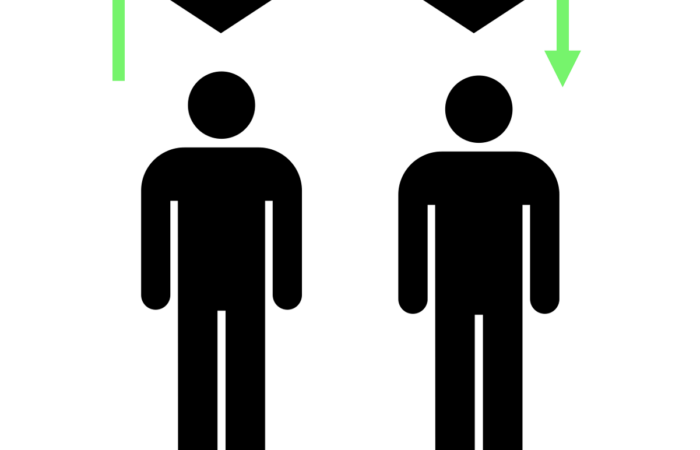If I were starting a freelance website design business, here is what I would do to get profitable quickly.
Every business needs a website, and platforms like WordPress mean creating websites is an attractive opportunity for freelancers and small business owners. While many freelancers have technical knowledge, even expertise, the reality is that being successful at business is another skill set entirely.
I’m often asked ‘How to start a freelance website design business’ – so if you’re looking to launch, or wondering why your web design startup is struggling, here’s my answer. I will warn you in advance: don’t think inbound marketing will save you, this is going to require hustle.
Step 1: Product and Brand Promise
To begin with, you need some clarity on your product – ie, what exactly you’re selling. Nobody will buy if they don’t know what they’re buying. This will evolve and change over time, but you need to start with something.
For the purposes of this detailed guide, I’m working on the assumption that you’re going to build simple websites for local businesses. Why? Because simple websites are easier to sell and easier to build than complex sites; and targeting local businesses (ie, small, privately owned companies that are close to your location) gives you a competitive advantage. If you have specific experience, in regards to website type or industry niche, by all means focus there.
Now you need a way to explain what you do. This is called a lot of things – elevator pitch, brand promise, positioning statement etc. Here’s the framework I run my client through:
WE DO …
FOR …
WHO …
I DON’T …
OUR PROCESS…
As in,
WE build simple, strong websites FOR small business owners in WHO want to look more professional but can’t afford to invest too much time and money I DON’T do the ongoing social media strategy, because nobody will know and love your business as much as you do. MY PROCESS is designed to translate what makes a business special into a website without wasting hours of the small business owner’s time.
Adjust and personalize as you see fit. But internalize / memorize this – you’re going to be saying it a lot so it needs to be impactful, natural, and easy for you to roll out.
Note that I don’t talk about ‘creating return on investment / more clients etc’. You definitely could to that, but if you don’t have a track record yet then you’ll fail the authenticity test when the first prospect says “Give me an example of how you have helped another client create more clients.”
Step 2. Outbound Activity, aka ‘Sales’
Every business is a sales business. If you hate sales, you have no place being a business owner.
From Step 1, now that you know what you’re selling and how to explain it, you need to ramp up your sales-related activity.
I would suggest:
- Run a Google search for businesses in <your location>. Start creating a list (spreadsheets are fine for this) of local business names, domains, owner names, address, and contact details. Aim for 50 to begin with.
- Your first goal is to talk to 10 of these business owners about what they want from a website. Treat this as a research exercise – you are not allowed to sell to these people yet.
- Call them or walk in to their place of business – introduce yourself, explain that you are starting a new web development business in and are doing some research into the problems local businesses may have with other web developers. Can they spare 15 minutes to talk with you? Again, you genuinely want to understand their pain points. Resist the urge to sell – if they ask for more information, ask to book another meeting with you to discuss because right now you’re in research mode.
- Once you’ve had those 10 discussions, you will be able to have much more valuable conversations with actual prospects in a sales situation. It’s possible to complete a full research paper process here (research-led marketing) but for now, I’d just limit this to a blog post on your website – something like The Top 10 Issues <your location> business owners have with their website
It’s possible through this process that you’ll identify a more specific target market or better pain point for the FOR and WHO steps at point 2, but probably not.
You’ll notice I haven’t talked about social media, your website, inbound marketing etc. These are all ways you can create clients, but starting out you need to hustle. You need to talk to a LOT of potential clients and you need to enjoy that. Inbound marketing, when done well, delivers a long term return on investment. But unless you’re super-well funded, you don’t have a long term focus – you need clients and revenue now, so your business still exists when inbound marketing pays off.
When I run training on this topic, most attendees never get to those 10 research conversations. And most of those businesses never make any money. And they wonder why.
Step 3. Pricing
Keep it simple – maybe something like:
- Simple Website (3 pages) $999
- Engagement Website (5 pages including blog) $1,499
- Tailored Websites $Price on Application, from $2999
Adjust those prices and specific according to the market. Do research on other small web developers – remember the RND rule … “Rip-off ‘n’ Duplicate” what’s working.
There’s often a debate about whether freelance website design businesses should give away some work for free, to help give them case studies and exposure. I point out that people die from exposure. If you can’t sell, or can’t convince someone that your website building skills are worth money, it’s better to find that out now.
The great advantage about building websites is that your website is an example of your work. Needless to say, make sure your website is functional, responsive, looks good etc. Don’t be the plumber with the leaky taps, or the SEO expert who’s on page 2 of google.
Now, having said that, feel free to use verbal discounts to help get people over the line – eg, “The website you’re looking at is normally $999, but I am willing to do your for $800 if you sign up and pay by the end of December”. In the early stages, this can be a useful closing technique, and $800 (and a client) this month is of more help to you than $999 next month.
Notice I’m using fixed fees, not hourly rates. Most business owners prefer that – you’re selling them a product (new website) for a known price. They know they’re not going to get surprised by a $5000 bill from you.
If you feel you can’t productise your services sufficiently, maybe explain the situations in which an hourly rate would be applied (eg, multiple revisions, setting up social media accounts and linking them, etc). Every element of price uncertainty will reduce your conversion rate.
Step 4. Sustainable Sales
Let’s use $100,000 annual revenue as the first target. (But set your own goal – if you want to be a digital nomad earning $40,000pa that’s cool; if you want to rapidly bust through the $1 million mark then that’s also awesome). Using $100,000, that’s 60+ websites based on my figures above, so straight away you either need to get good at sales or you may need to up your prices.
Starting out, there are 3 numbers you need to know (I talk about these in my video as well):
- How many new leads you bring in each month
- What % of those leads convert into specific sales proposals
- What % of those proposals convert into actual clients
General starting point is that leads have a 30% conversion rate to proposals, which have a 30% conversion rate to clients. So you need 10 leads for every 1 client (10->3->1).
Over time, you can monitor and improve these ratios – I worked with a client who ran a 10-9-9 system. He only took clients by referral, because that gave him the best conversion rate (10 leads to 9 proposals; why waste time on web leads at 30%?) and he had an awesome sales meeting process that converted basically every client he pitched.
When you know your numbers, you can identify where to improve. But for the first 50 leads, you just have to do the doing – go to the sales meeting, explain what you do, ask about their needs and concerns, present yourself as a solution and explain the price and process you recommend for them. Wherever possible, do this in person – phone calls and face to face meetings.
NEVER send a proposal by email when you’re selling locally. Email will only help you in volume – when you have lots of leads and lots of time waiting for them to reply. Resist the temptation to blast out an email to 50 people … you’ll spend the next 2 weeks with nothing to do, because it’s too soon to follow up and nobody will reply.
This is where you’re going to spend most of your living, breathing life during start-up, so you want to systemise your sales approach as much as possible to make sure it’s sustainable.
My general target is to make 5 phone calls a day and book 4 meetings per week. If you love talking to people, do more (I’ve coached industries like real estate, where 50 or 100 calls per day is a target). If you can, take 8 or more meetings per week. One tip I recommend is to book meetings on the same day – better to have a sales day with 4 meetings than 4 days where you get interrupted by a sales meeting. This helps with focus and momentum, which helps with conversion rates.
Your first meeting is about Engagement – understand their business, introduce yours. Some people may buy in that meeting, but often not. So you’ll end the first meeting by scheduling in a follow-up meeting where you will return with a specific proposal. Have a proposal template, but add in personalised things you heard from the first meeting. The second meeting is where you will close the sale.
Eventually – let’s say 10 completed projects to start with – you’ll be in a better position to refine your sales process. Where are the best clients coming from? Are you asking for referrals? Where do people fall out of the sales funnel – before they ask for a proposal, or are you not closing the deal when you pitch them in person?
You can now start to expand your marketing activity etc as well, to start filling the top of the funnel.
Step 5. Delivering the Work
This will also be clunky at first, so set realistic deadlines and expectations with your clients so they don’t get angry. The first few jobs won’t be efficient and likely won’t be profitable, so keep looking for ways to make the process easier.
If you’re great at sales, outsource the delivery work. If you’re great at delivery, find referral partners who can help sell the work for you (eg, marketing or brand agencies who might charge the client $5K and pay you $3K to build the website. If you think that’s unfair, sell everything yourself, but don’t hate sales and think it’s unfair.)
It would be remiss of me not to mention that you need to continue to improve your technical skills as well. You don’t have to be the best designer in the world to be successful at business, but it doesn’t hurt to improve your capability (or at least, identify and accept your weaknesses). You can learn more about how to be a Designer here.
Step 6. Administration
The first 18 months or so of any new business are exhilarating and exhausting. Part of this is because you are now responsible for so much more than when you were ‘just’ looking after delivery. Not only do you have to add sales and marketing to your schedule, you also have to think about the administrative side of your business: things like invoicing, banking, business structures etc.
I can’t give specific advice here because it varies so much between jurisdictions, but can say don’t go overboard initially with too many structures. Make sure you put money aside for tax – for the first 5 years of my business I put aside 10% for Sales Tax (which was set at 10%) and 30% for Personal Income Tax (but I paid on average 20% after deductions, so now I only put aside 25%). I may live in a different country to you, so treat that as a system not a rule. You may have a higher risk profile to me and prefer paying tax out of cash flow – I can introduce you to many former business owners who tried that approach, but it’s not impossible.
Plan to spend at least 10% of your time (that’s half a day each week) on this administrative side of your business. Otherwise it will build up and put a massive handbrake on actual revenue-generating work.
In Summary
In summary, if you want to start a freelance website design business, your priorities are:
- Product / Market Fit – what are you selling, who are you selling it to, and why will they buy?
- Sustainable Sales – winning the first clients, then improving the marketing process and sales funnel to win more, more easily
- Business Model – turn your delivery into a process, so you can do it more efficiently and scale it up over time.
Sounds easy, but remember more than 50% of all micro businesses fail in the first year. They may be great at what they do (eg, web development) but not at being in business (which, in start-up, largely means sales).
If this applied to you, good luck!




